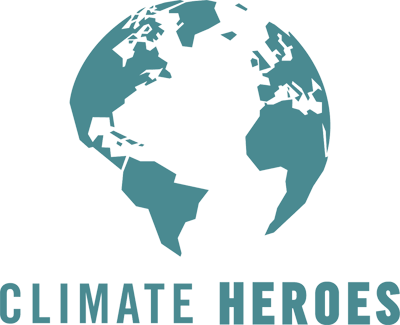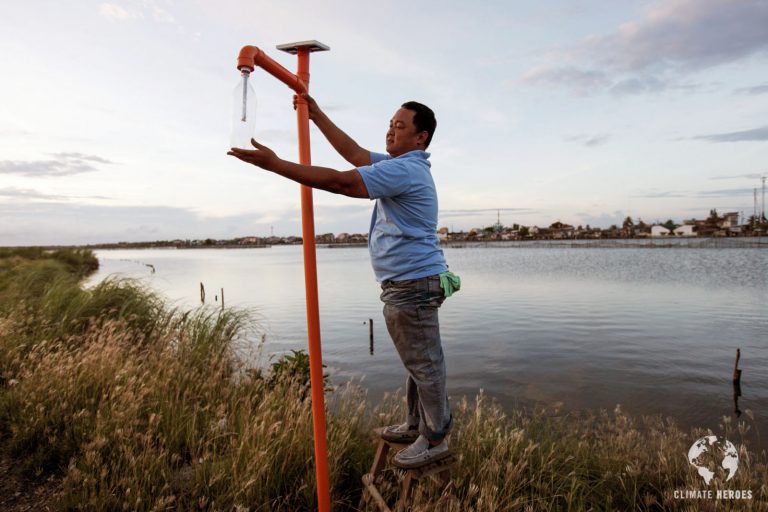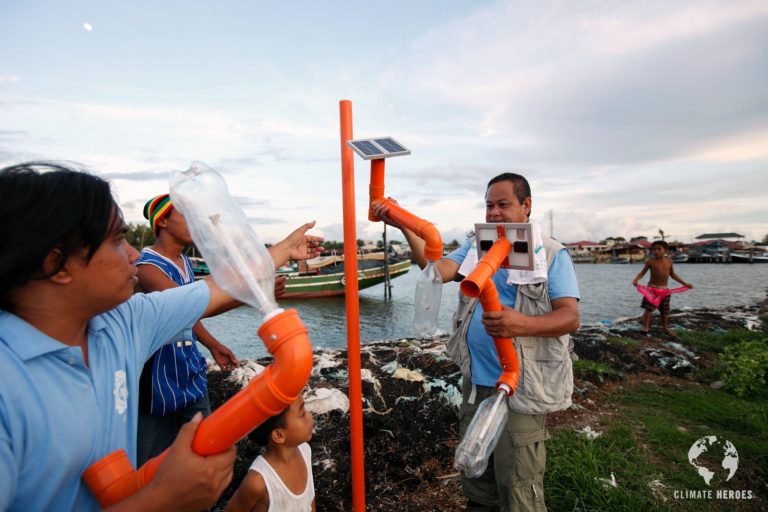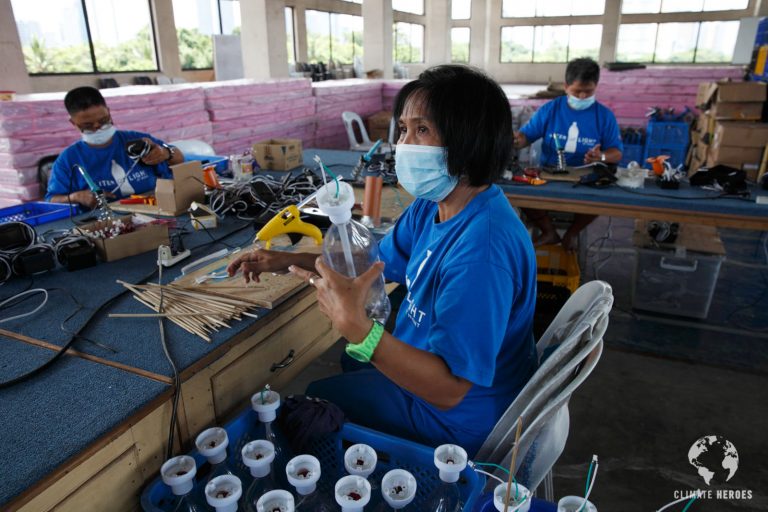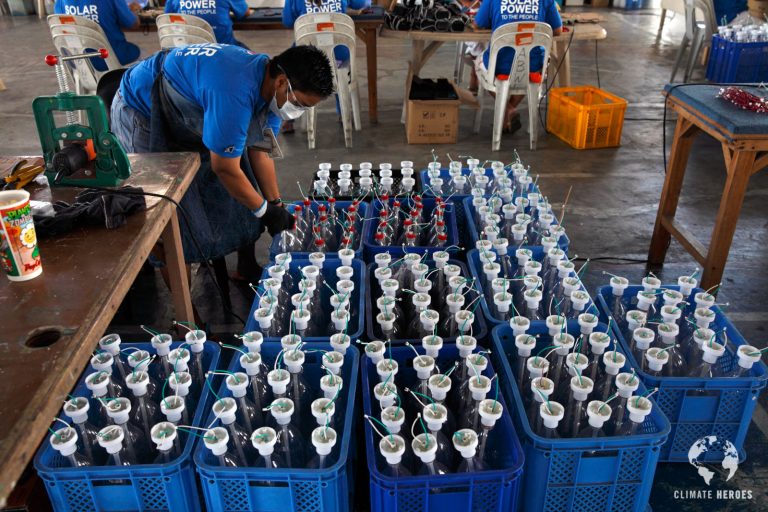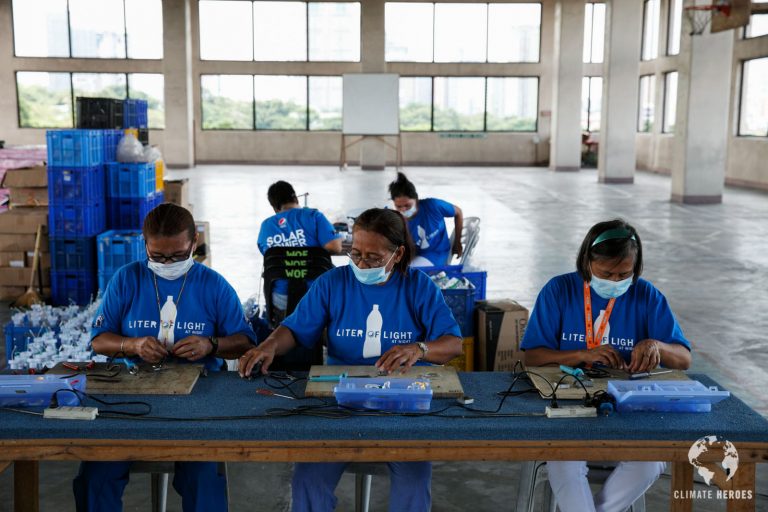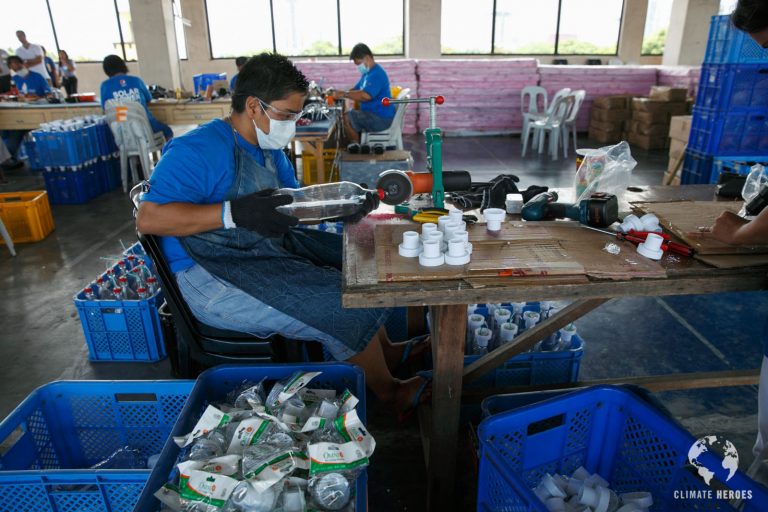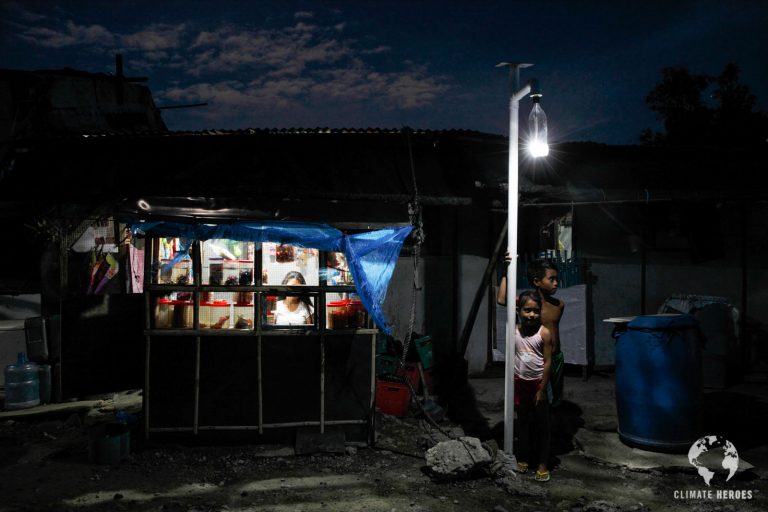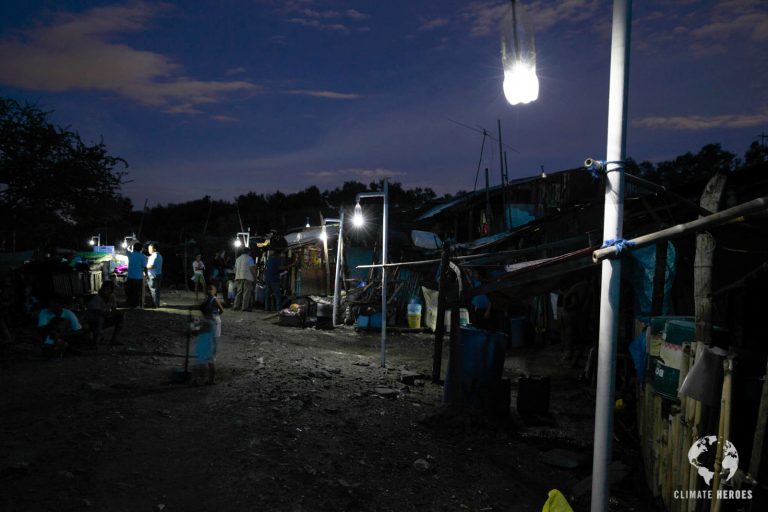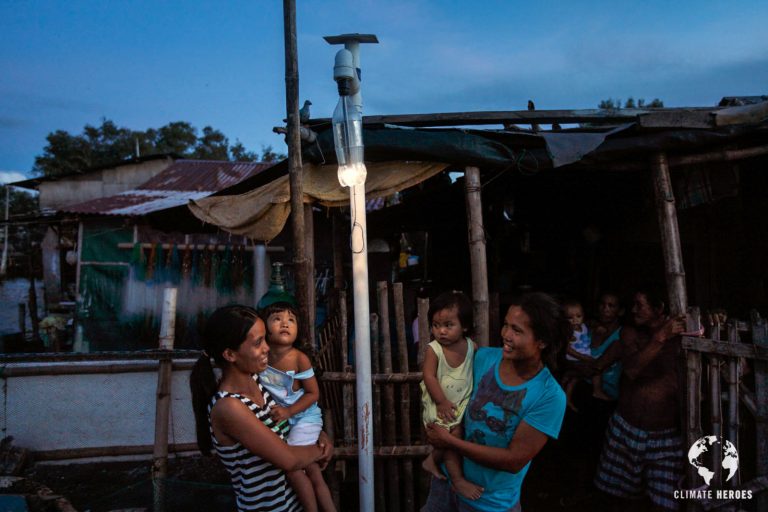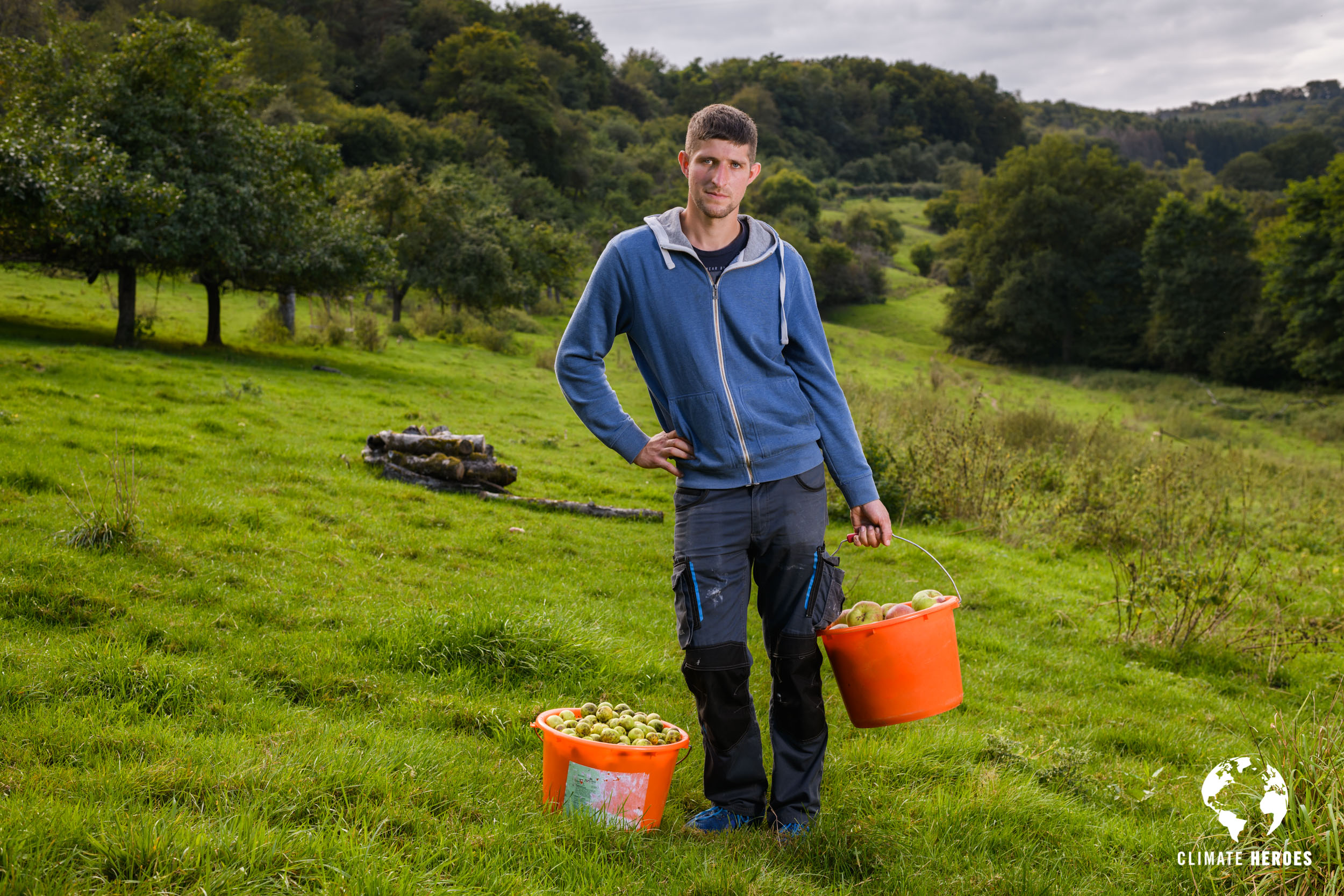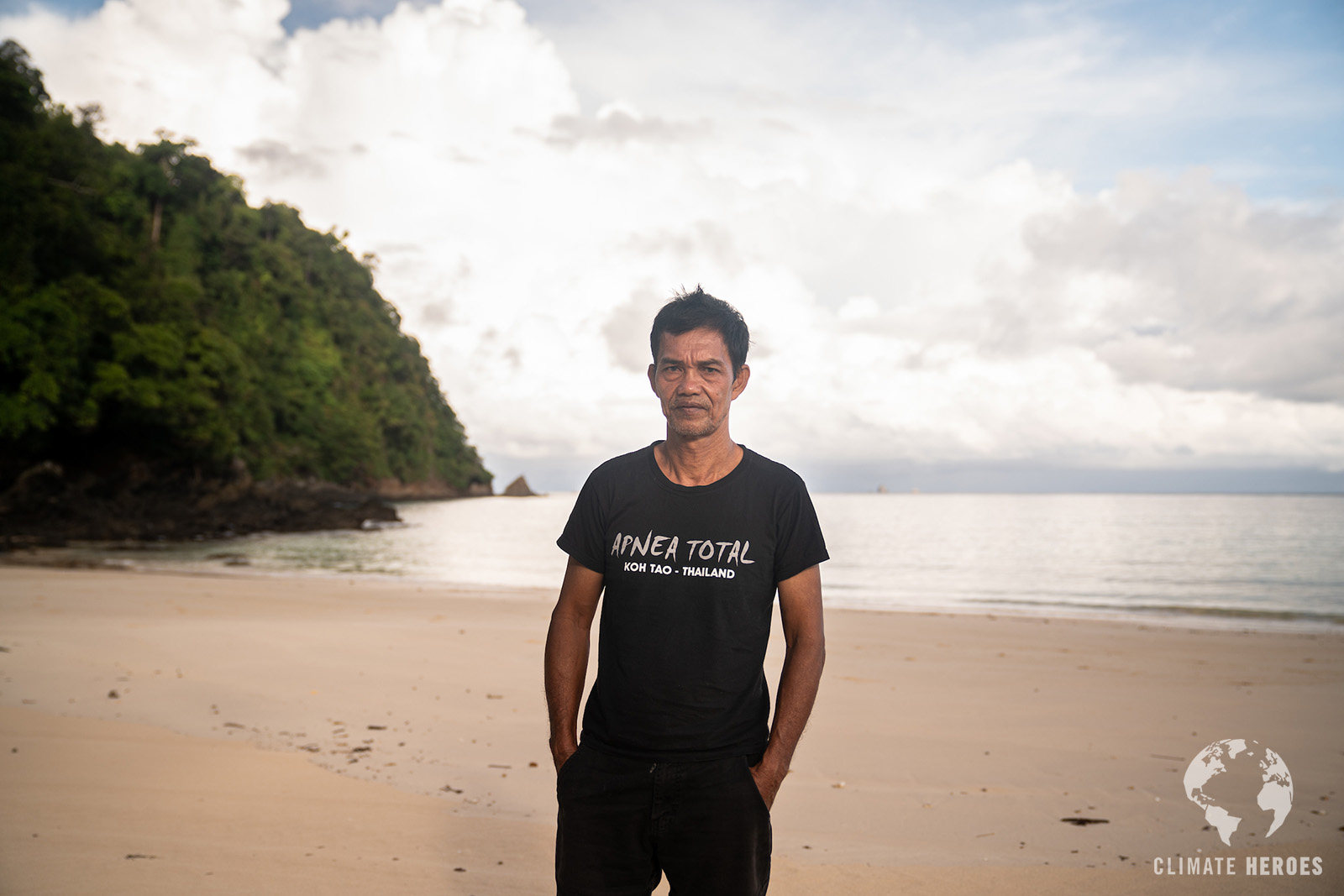Illac Diaz: Light by the liter
Illac Diaz and his NGO Liter of Light has already helped over 382,000 Filipinos, and 690,000 people throughout the world to get out of energy poverty.
At 44 years old, Illac Diaz is no ordinary entrepreneur. From Peru to the Philippines, his NGO Liter of Light has already helped 382,000 Filipinos, and 690,000 people throughout the world, to get out of energy poverty. Thanks to a clever and environmental-friendly lighting concept, made out of recycled plastic bottles, this achieves the goal of bringing light to poor areas while at the same time avoiding to rely on traditional and centralized energy providers such as coal, nuclear or even hydro plants.
Born in the Philippines in a wealthy Italian family, no one could have guessed Illac would one day become a social entrepreneur. In parallel to completing studies in economics, he then worked as an actor and roamed the city’s nightlife. But after an early career in advertising and a Master’s degree in entrepreneurship, he decided to give a new meaning to his life.
His first social project, Pier One, was designed to help sailors between contracts get a bed close to the harbor, in an area of Manila were the housing crisis was particular harsh, and decent accommodation for reasonable budget, scarce. With a dormitory gathering 40 beds at the beginning, the project is still alive and now offers over 1,500 beds. This proof of concept gave birth to the Centro Migrante initiative, which teaches sailors between contracts how to build their own home. Illac quickly became renowned worldwide for his action in social entrepreneurship. He gained support from MIT and Harvard to improve his projects, before founding Myshelter Foundation in 2006, the organization operating Liter of Light today.

Liter of Light was born from an original idea by Alfredo Moser in 2002, and consists of giving plastic bottles full of water and bleach (to prevent algae from growing in the water) to households and schools in areas without access to electricity. This method can also be of use in areas where the regular network is faulty, or where being connected to the grid is simply too expensive. One bottle is inserted into a whole made in the roof of the house, and provides the equivalent of a 55-Watt bulb during the day, with the sunlight refracting through the water in the bottle and into the house. But what happens during nighttime when kerosene lamps or candles have to be used, with at times dangerous consequences such as fires, of health hazards?
The village of Rizal, less than two hours north of Metro Manila, in the Philipines, is one of the beneficiaries of Liter of Light’s solutions. Until November 2015, Rizal and the neighboring communities of Mabolo, Bagong Sigla and Malasia in the Barangay (the smallest administrative unit in the Philippines) of Puray, used to live with the sun, as about 30% of Filipinos not yet connected to an electricity grid, still do.
In Rizal, most men leave the village during the week to work in the neighboring hills in order to make coal from cutting trees or to grow vegetables. Women stay home and take care of the household, while kids go to school and help their parents during the weekend.
Their life has changed since Liter of Light has installed the 100 solar lamps in the past months. Those are complemented by 50 streetlights for the streets of the village. Together, they allow the community to benefit from an additional two hours of light everyday after the night has come. This system is a safe and affordable lighting option, made of a small solar panel, a second-hand battery gathered from partner electronics stores, and a wire connected to a LED lamp, diffusing the light through a recycled plastic bottle.
After 8p.m., a lady has decided to install her light above a pool table, and young boys are happy to pay 5 pesos (0.10€) in order to play pool among friends. Further up the village, a single mother has been able to open a small shop where the community can come and by essential supplies, day or night.
Liter of Light isn’t a traditional company. Beyond the income collected from its lamps, this social business allows poor communities to create new economic activities for themselves. The initial installation of the lamps is either financed by private donors, companies or public institutions, or by the community itself.
In the later case, groups of 5 women are created in the communities that require the solar lamps. The parts are delivered to them and Liter of Light asks for a deposit, adding a 20% margin on top of its own purchasing costs, in order to account for administrative expenses. The women then assemble the lamps, and can sell them to reimburse the micro-credits made to the community. Those lamps cost around 3,900 Pesos (75 Euros) for a solar street lamp, or 3,100 Pesos (60 Euros) for a household lamp. As for the parts, a spare LED bulb that can last over two years costs only 50 to 100 Pesos (1 to 2 euros), and the spare battery about 700 Pesos (13 Euros) and will last over four years.
By managing their stock, the payback on the micro-credits, the installation and the repairs, those women become entrepreneurs of their own, while also contributing to the improvement of the living conditions of the community.


